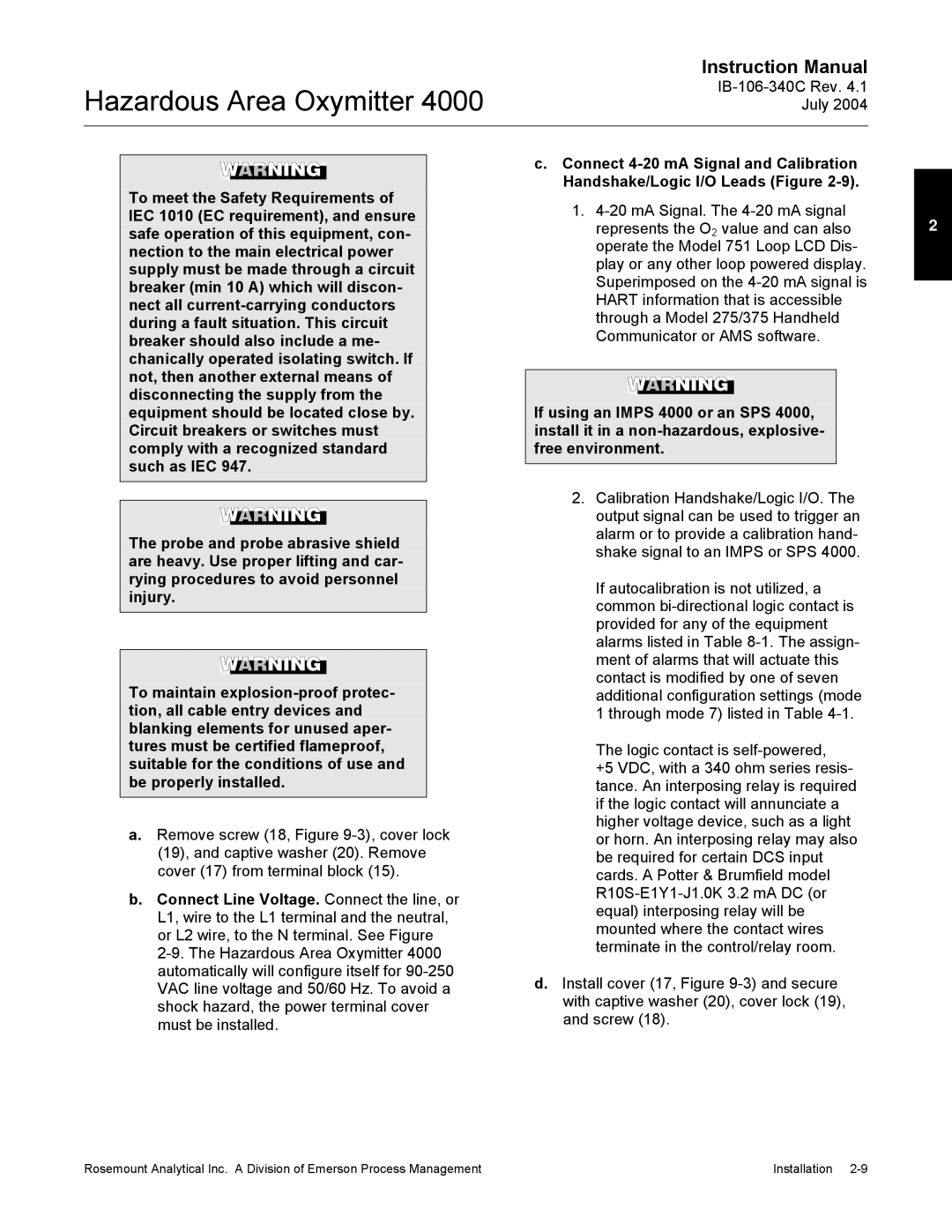To meet the Safety Requirements of IEC 1010 (EC requirement), and ensure safe operation of this equipment, con- nection to the main electrical power supply must be made through a circuit breaker (min 10 A) which will discon- nect all current-carrying conductors during a fault situation. This circuit breaker should also include a me- chanically operated isolating switch. If not, then another external means of disconnecting the supply from the equipment should be located close by. Circuit breakers or switches must comply with a recognized standard such as IEC 947.
The probe and probe abrasive shield are heavy. Use proper lifting and car- rying procedures to avoid personnel injury.
To maintain explosion-proof protec- tion, all cable entry devices and blanking elements for unused aper- tures must be certified flameproof, suitable for the conditions of use and be properly installed.
a.Remove screw (18, Figure 9-3), cover lock (19), and captive washer (20). Remove cover (17) from terminal block (15).
b.Connect Line Voltage. Connect the line, or L1, wire to the L1 terminal and the neutral, or L2 wire, to the N terminal. See Figure
2-9.The Hazardous Area Oxymitter 4000 automatically will configure itself for 90-250 VAC line voltage and 50/60 Hz. To avoid a shock hazard, the power terminal cover must be installed.
c.Connect 4-20 mA Signal and Calibration Handshake/Logic I/O Leads (Figure 2-9).
1. 4-20 mA Signal. The 4-20 mA signal | 2 |
represents the O2 value and can also |
operate the Model 751 Loop LCD Dis- play or any other loop powered display. Superimposed on the 4-20 mA signal is HART information that is accessible through a Model 275/375 Handheld Communicator or AMS software.
If using an IMPS 4000 or an SPS 4000, install it in a non-hazardous, explosive- free environment.
2.Calibration Handshake/Logic I/O. The output signal can be used to trigger an alarm or to provide a calibration hand- shake signal to an IMPS or SPS 4000.
If autocalibration is not utilized, a common bi-directional logic contact is provided for any of the equipment alarms listed in Table 8-1.The assign- ment of alarms that will actuate this contact is modified by one of seven additional configuration settings (mode 1 through mode 7) listed in Table 4-1.
The logic contact is self-powered,
+5 VDC, with a 340 ohm series resis- tance. An interposing relay is required if the logic contact will annunciate a higher voltage device, such as a light or horn. An interposing relay may also be required for certain DCS input cards. A Potter & Brumfield model R10S-E1Y1-J1.0K 3.2 mA DC (or equal) interposing relay will be mounted where the contact wires terminate in the control/relay room.
d.Install cover (17, Figure 9-3)and secure with captive washer (20), cover lock (19), and screw (18).

